10 Best Open-Source Tools to Build Internal Data Apps
 Lucy Zhang
Lucy Zhang
Originally published at 10 Best Open-Source Tools to Build Internal Data Apps - NocoBase.
Introduction
For developers, one of the most common needs at work is to quickly build a data application.
It could be an operations dashboard, an internal query tool, or a simple customer data portal.
Traditionally, you'd have to write a backend, connect to a database, and then build the frontend.
Fortunately, today we have excellent open-source tools that allow you to build production-ready data applications within hours.

In this article, I’ll introduce 10 powerful open-source projects and explain what types of data applications they’re best suited for.
Quick Categories
Internal Tools
Data Visualization
Backend & Data Services
Lightweight Spreadsheet Databases
Let's go through each category to explore the key features and ideal use cases of these tools.
NocoBase
An open-source, no-code platform driven by data models. All features are provided as plugins, supporting visual app building and flexible extensions.
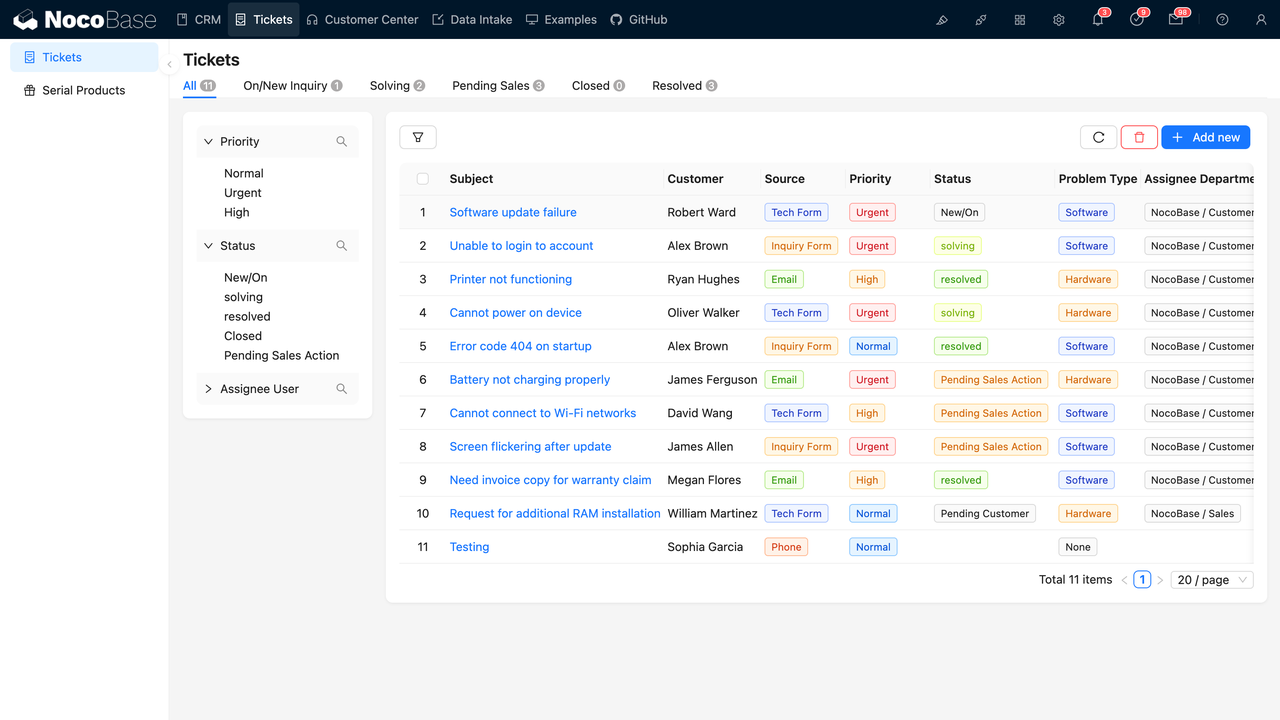
GitHub: https://github.com/nocobase/nocobase
GitHub Stars: 16.4k
Highlights:
Complex data modeling
Granular permission control
Automated workflows
Plugin-based architecture
Best for:
CRM: Manage customer records, sales processes, contracts, and after-sales info.
BPM: Build cross-department approval workflows.
Ticketing systems: Handle customer requests and internal support tasks.
Project management: Track tasks, resource allocation, and progress.
Internal platforms: Inventory, HR, or administrative tools.
Unique Advantage
While tools like Budibase, Baserow, and NocoDB focus on tables, NocoBase takes a data-model-driven approach with a fully separated front-end and back-end, making it a stronger fit for more complex business applications.
Appsmith
A low-code platform focused on quickly building internal tools, offering drag-and-drop UI components and rich data integrations.
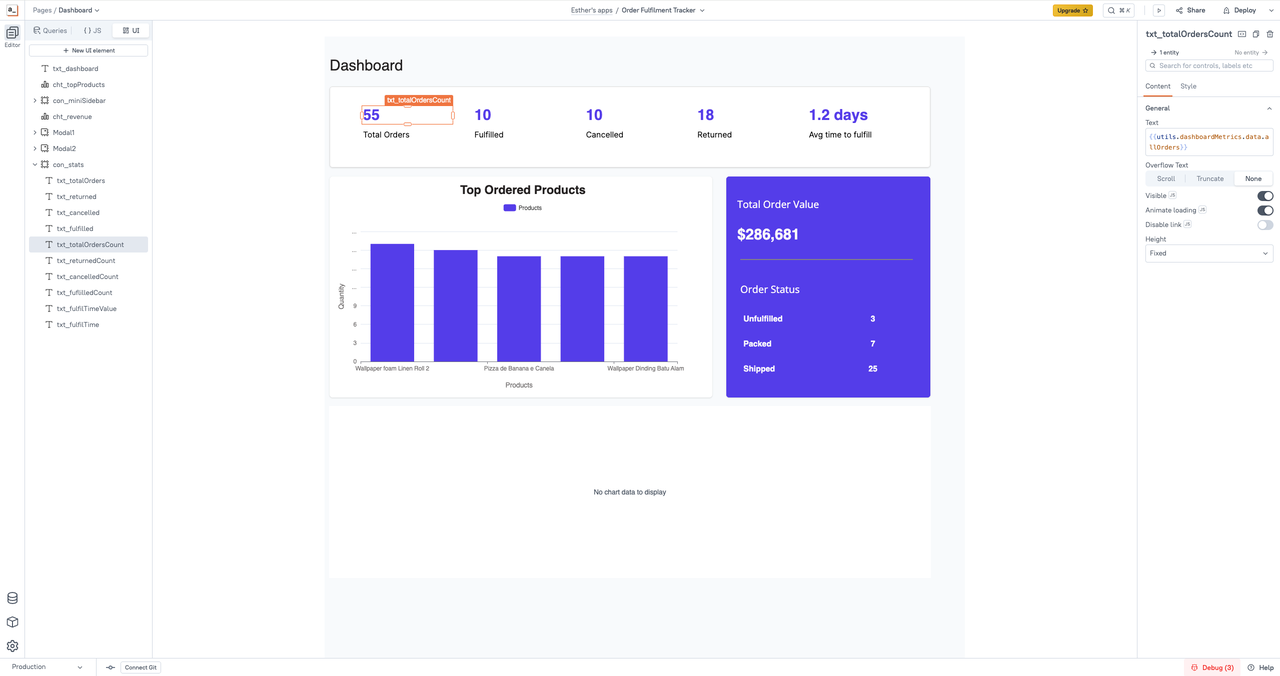
GitHub: https://github.com/appsmithorg/appsmith
GitHub Stars: 37.7k
Highlights:
Drag-and-drop UI builder
Supports REST, GraphQL, SQL, and more
Built-in JavaScript extensions and custom logic blocks
Flexible deployment: self-hosted or cloud
Best for:
Internal query tools: Build dashboards and data views quickly.
Approval & input systems: Form-driven workflows with permissions.
Customer support portals: Integrate multiple data sources.
Inventory dashboards: Consolidate data for daily operations.
Unique Advantage
Appsmith is developer-friendly: you can visually design UIs and extend them using JavaScript for greater flexibility—ideal for teams seeking fast delivery with customization.
💡 Read More: NocoBase vs. Appsmith: Which Open Source Low-Code Platform is Right for You?
Budibase
An open-source low-code platform supporting both built-in and external data sources. Perfect for delivering data applications rapidly.
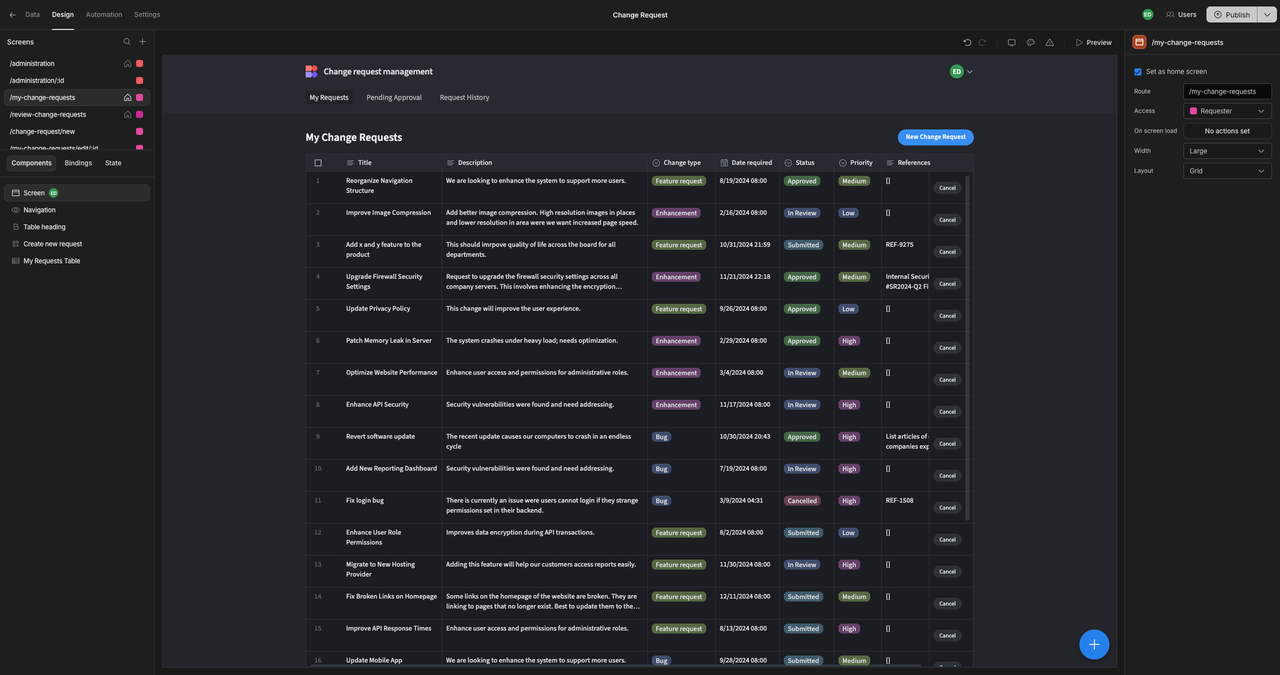
GitHub: https://github.com/Budibase/budibase
GitHub Stars: 25.4k
Highlights:
Built-in database with REST/SQL integrations
Drag-and-drop form/page builder
Automated workflows (emails, webhooks, task triggers)
One-click deployment (Docker & cloud)
Best for:
Employee portals: Centralized notifications, documents, and processes.
Form-driven systems: Reimbursement, leave requests, procurement approvals.
Inventory & asset management: Track items and usage.
Lightweight CRM: Manage client data and sales pipelines.
Data collection automation: Gather, validate, and process data.
Unique Advantage
Budibase excels in form-driven internal tools, combining automation capabilities with rapid deployment for end-to-end workflow management.
Metabase
An open-source BI and data visualization tool designed for both developers and business users.
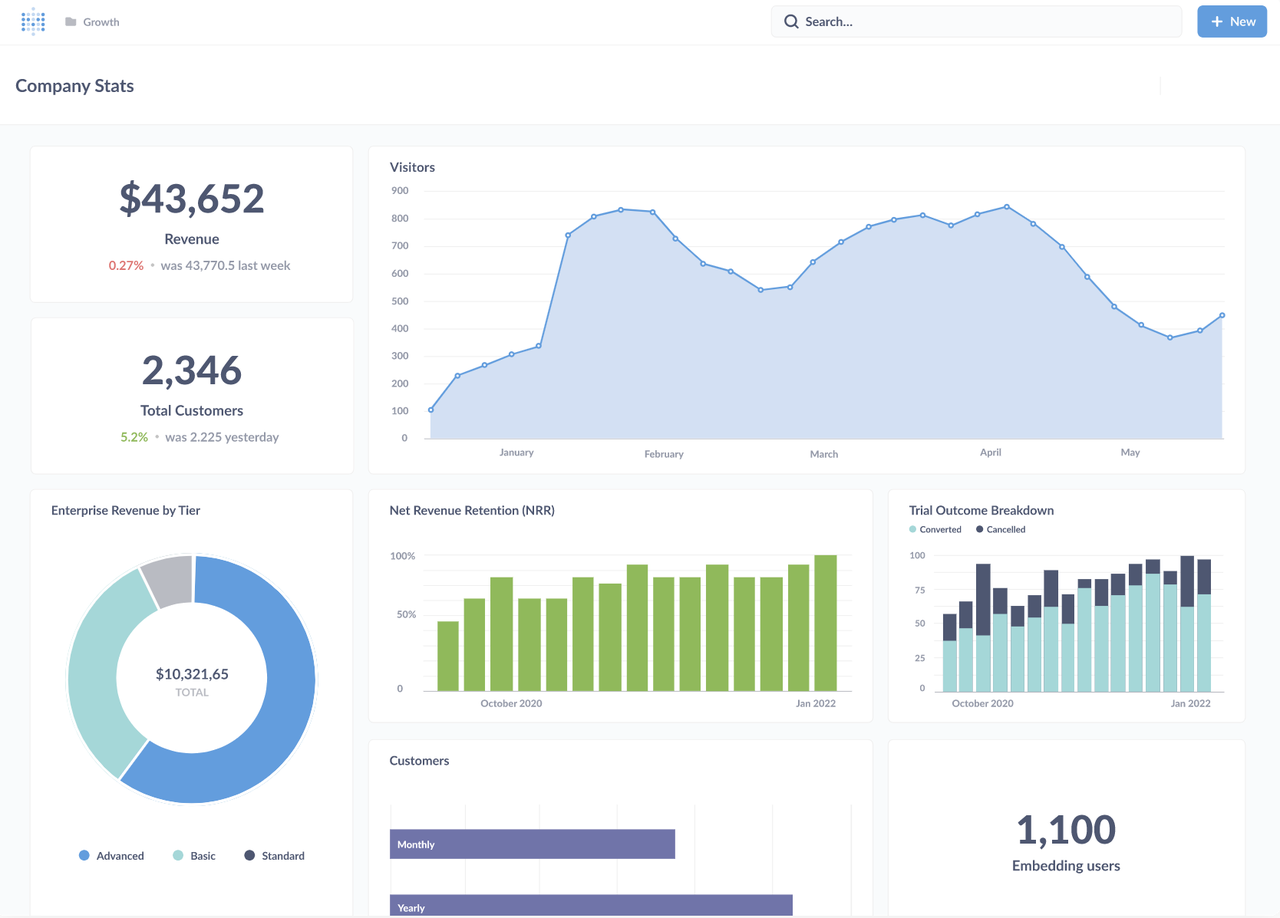
GitHub: https://github.com/metabase/metabase
GitHub Stars: 43.3k
Highlights:
No-SQL query editor
Advanced SQL support
Wide variety of dashboards and charts
Fine-grained permissions
Multiple data source support
Best for:
Operations dashboards: Monitor KPIs like sales, conversion, and engagement.
Executive reports: Automated visualization for decision-makers.
Interactive exploration: Filter and drill down into data visually.
Financial & marketing analysis: Aggregate complex reports easily.
Unique Advantage
Metabase offers out-of-the-box usability for quick dashboard setup, making it ideal for teams seeking immediate insights without heavy coding.
Redash
An open-source data visualization and query analysis tool built around SQL queries, Redash supports connecting to multiple data sources and helps teams quickly transform data into reports and dashboards.
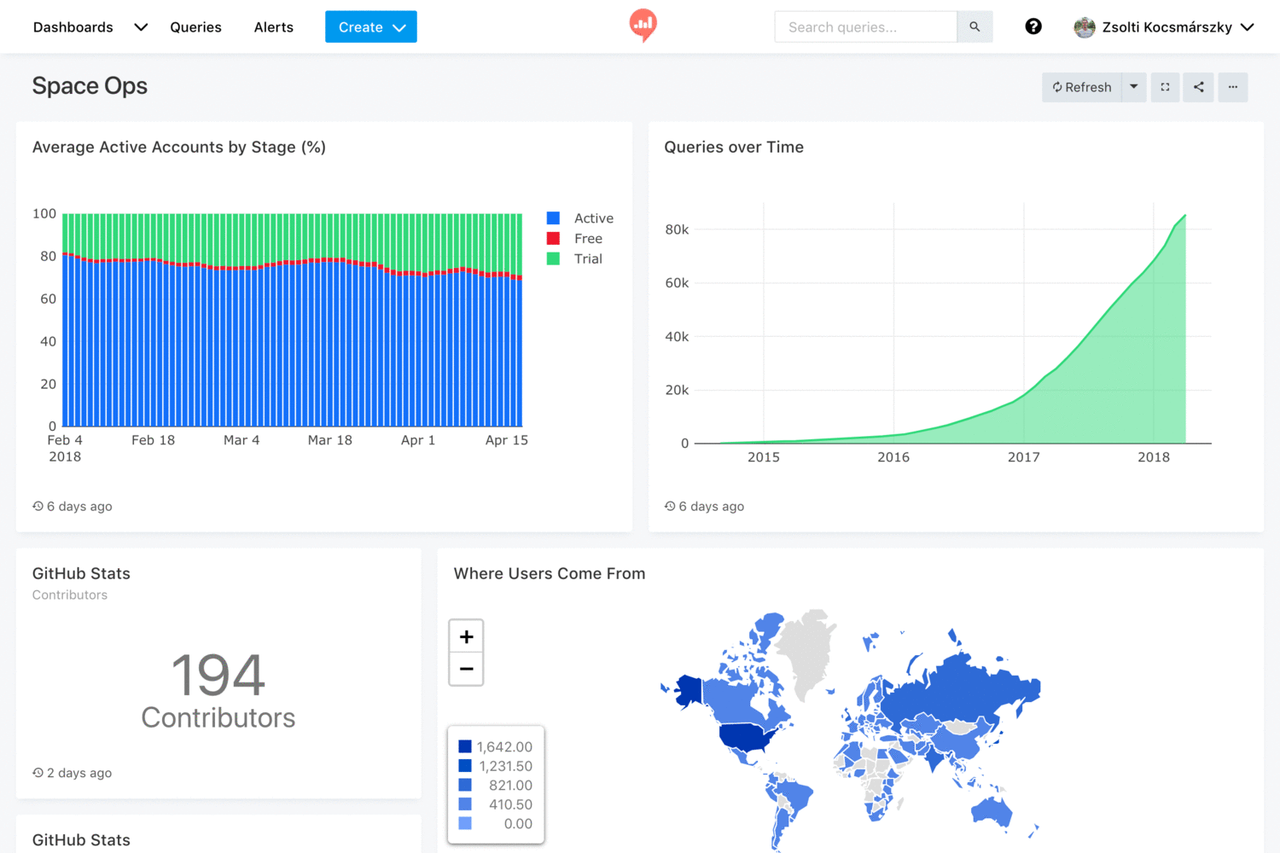
GitHub: https://github.com/getredash/redash
GitHub Stars: 27.7k
Key Features
Built-in SQL editor with support for multiple data sources (PostgreSQL, MySQL, BigQuery, Elasticsearch, etc.)
Visualize query results with various chart types
Dashboards combining multiple queries and visualizations
Team sharing and collaboration features
API support for automation
Best Use Cases
Business analytics reports: Generate recurring reports for sales, finance, and marketing KPIs.
Team-wide query sharing: Enable non-technical users to access data results and visualizations.
Operations & product monitoring: Track user behavior and product performance metrics.
Decision support systems: Provide executives and business teams with data-driven insights.
Unique Advantage
Redash is lightweight and developer-friendly. With SQL at its core, it offers technical users flexibility while providing intuitive dashboards and visualizations for business users — ideal for small teams or quick analysis needs.
Grafana
A widely adopted open-source platform for data visualization and system monitoring, Grafana connects to hundreds of data sources and excels at building real-time dashboards and alerting systems.
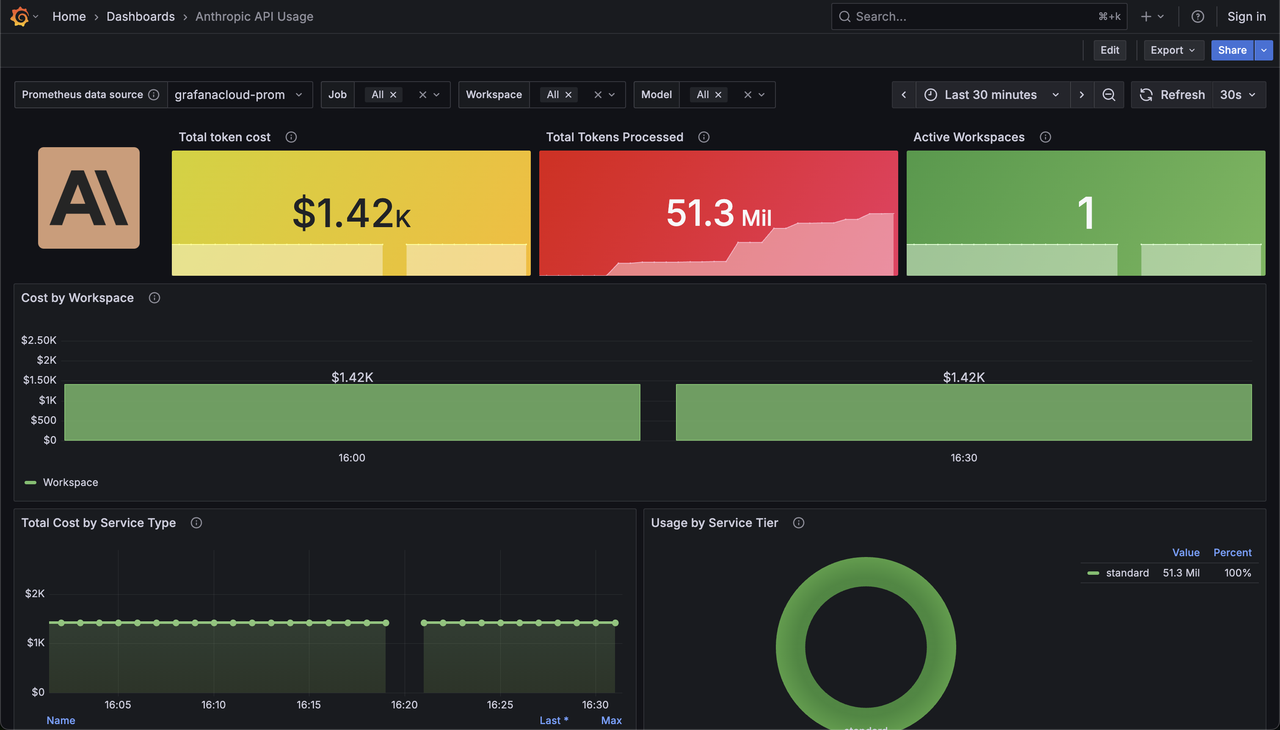
GitHub: https://github.com/grafana/grafana
GitHub Stars: 69.5k
Key Features
Extensive data source plugins (Prometheus, InfluxDB, Elasticsearch, PostgreSQL, etc.)
Flexible visualizations and dashboard layouts
Real-time monitoring and multi-dimensional metrics tracking
Built-in alerting with email, Slack, and Webhook integrations
Robust plugin ecosystem and high extensibility
Best Use Cases
IT operations & system monitoring: Track server, database, and network performance in real time.
IoT data visualization: Display device status, sensor metrics, and geolocation data.
Business performance dashboards: Showcase operational KPIs such as orders, conversions, and revenue.
Observability & alerting systems: Automatically trigger alerts on anomalies to maintain system stability.
Unique Advantage
Grafana excels in real-time monitoring and alerting. Beyond creating beautiful dashboards, it enables multi-source data observation, making it the go-to choice for DevOps, IoT, and any scenario requiring real-time visualization.
Supabase
An open-source Backend-as-a-Service (BaaS) platform, often called the “open-source Firebase,” Supabase is built on PostgreSQL and offers a full suite of backend services, including database hosting, authentication, storage, and real-time APIs.
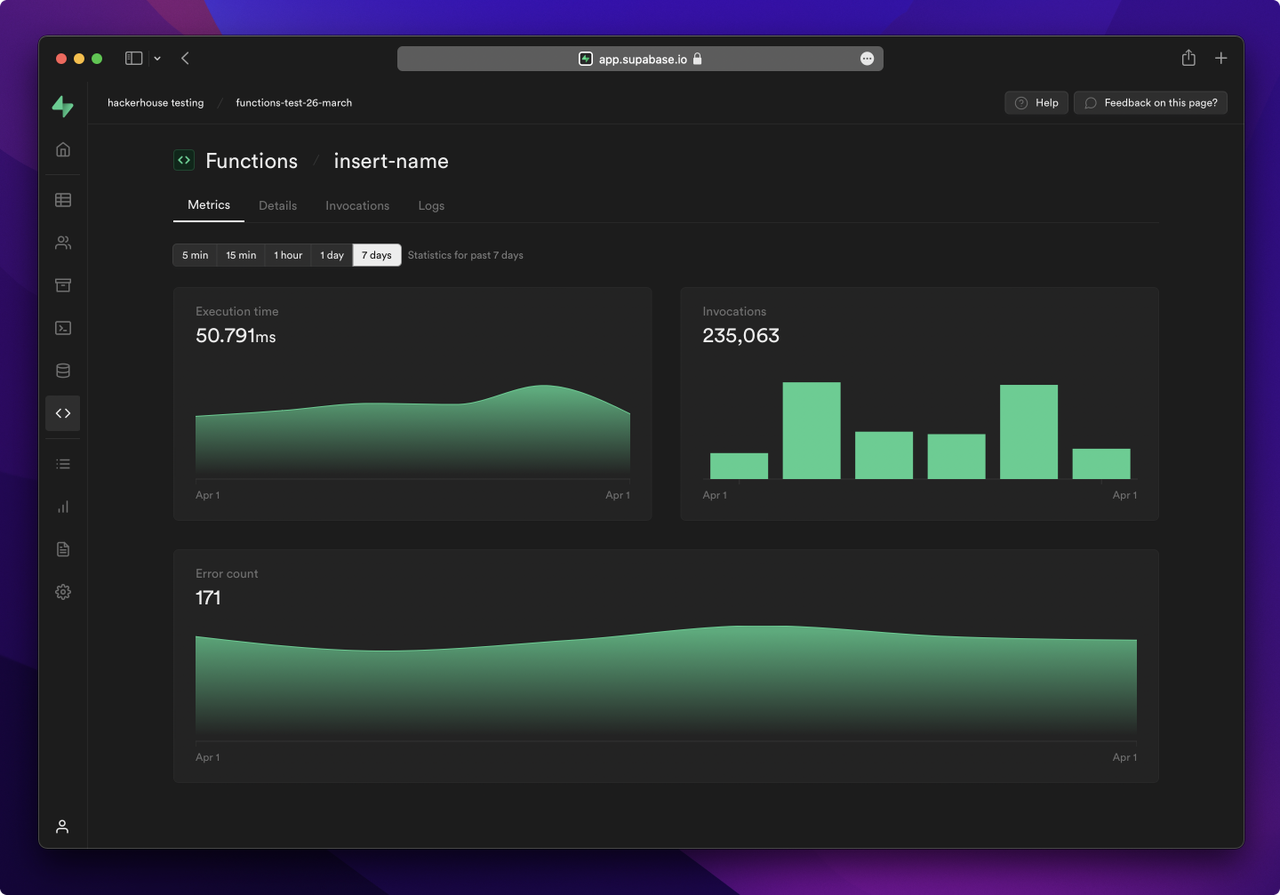
GitHub: https://github.com/supabase/supabase
GitHub Stars: 72.0k
Key Features
Managed PostgreSQL database hosting
Real-time APIs and subscriptions
Built-in authentication and role-based access control
File storage service
Edge Functions for serverless computing
Best Use Cases
Real-time collaboration tools: Build chat apps, collaborative documents, or any app requiring live updates.
Mobile & web app backends: Quickly spin up SaaS applications with authentication and database support.
Customer data portals: Provide secure, unified access to user-specific data.
Data collection & analytics systems: Ideal for lightweight apps requiring fast data storage and retrieval.
Unique Advantage
Unlike traditional setups requiring separate backend and database configurations, Supabase delivers an integrated backend solution. Developers can launch databases, authentication, and real-time APIs with minimal coding, making it perfect for teams that need to launch data apps quickly.
Directus
An open-source data platform and headless CMS, Directus offers plug-and-play APIs and an intuitive admin dashboard for any SQL database, making it ideal for building a centralized data service layer.
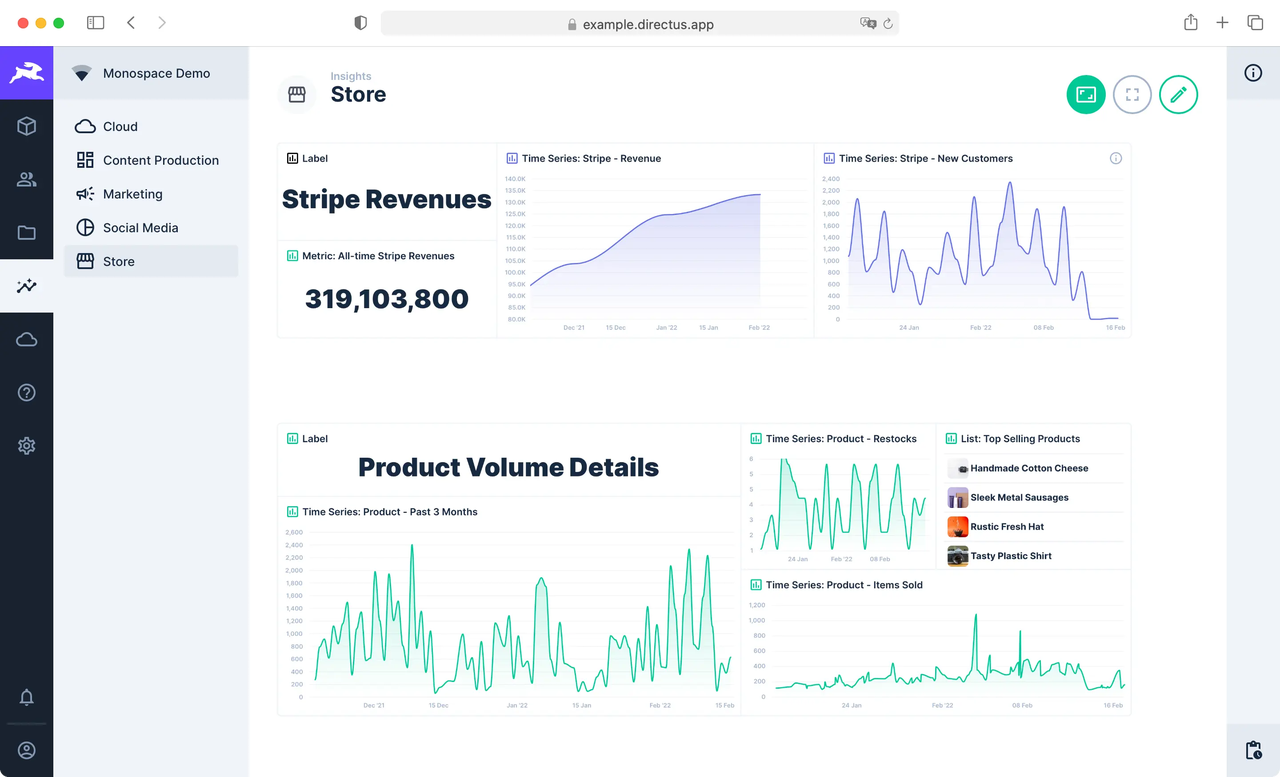
GitHub: https://github.com/directus/directus
GitHub Stars: 32.1k
Key Features
Auto-generates REST and GraphQL APIs for any database
Visual, no-code admin dashboard
Flexible user and role management
Functions as a headless CMS for content
Plugin and extension support
Best Use Cases
Content management systems (CMS): Manage articles, media, and product catalogs in a decoupled architecture.
Data-driven frontend apps: Provide structured data via APIs to web and mobile applications.
Data service layer / API hub: Centralize database management and standardize data access across systems.
Customer & partner portals: Share controlled data securely through role-based permissions.
Unique Advantage
Directus specializes in instantly generating APIs and admin dashboards for existing databases. Without altering database schemas, teams gain powerful visualization and management capabilities, making it an excellent choice for building data hubs or backend layers for frontend apps.
Baserow
An open-source Airtable alternative with a spreadsheet-based interface, Baserow supports multi-user collaboration and API integration, enabling teams to manage structured data with minimal technical overhead.
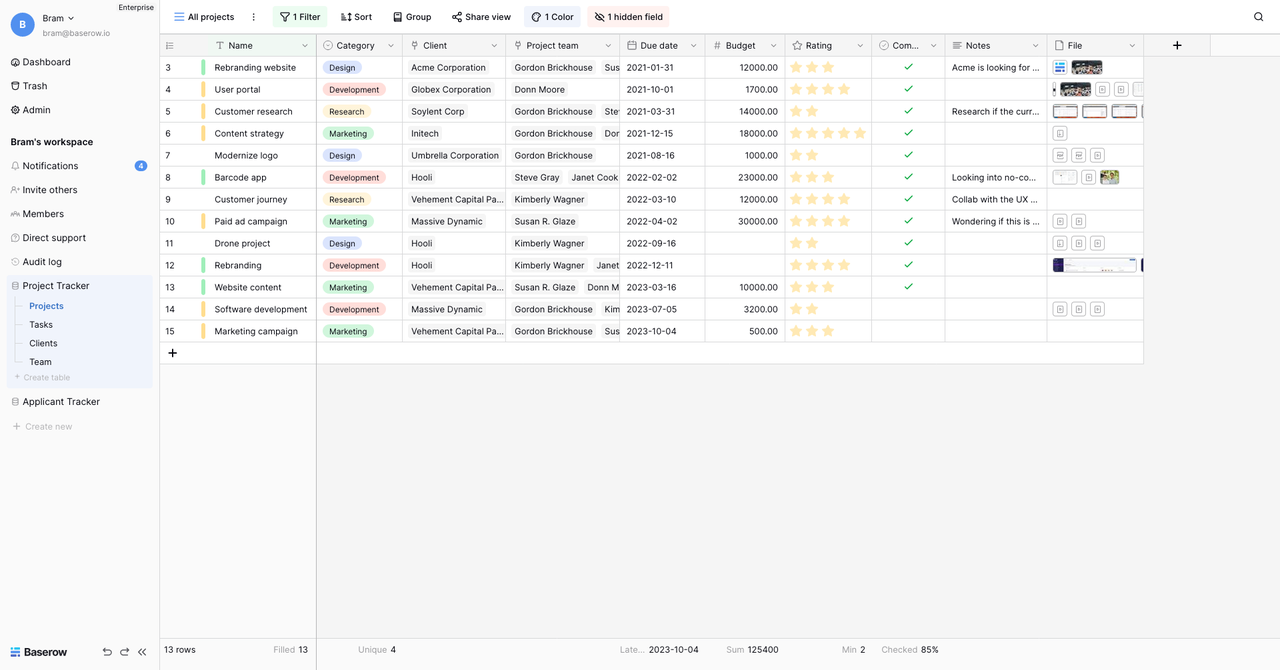
GitLab: https://gitlab.com/baserow/baserow
Key Features
Spreadsheet-style data management with a clean UI
Self-hosted and cloud deployment options
Open API for integration with other systems
User permissions and team collaboration support
Evolving plugin and extension ecosystem
Best Use Cases
Lightweight CRM: Centralize customer data and communication history.
Task & project management: Track tasks and progress using table or Kanban views.
Data collection & entry systems: Build forms and workflows for online data input.
Content directories & catalogs: Manage product lists, resource libraries, and internal documents.
Unique Advantage
Baserow delivers a spreadsheet-first experience designed for non-technical users while maintaining flexibility through self-hosting and open APIs — a compelling choice for teams seeking an open-source Airtable replacement.
NocoDB
An open-source platform that transforms traditional databases into Airtable-like interfaces, NocoDB allows you to quickly build spreadsheet-style web apps on top of MySQL, PostgreSQL, and other databases.

GitHub: https://github.com/nocodb/nocodb
GitHub Stars: 56.5k
Key Features
Converts relational databases into spreadsheet views
Auto-generates APIs for seamless integrations
Role-based access control and permissions
Multiple view types (table, gallery, Kanban)
Self-hosted with built-in team collaboration
Best Use Cases
Database visualization & management: Manage structured data through an intuitive table interface.
Rapid CRUD apps: Build create-read-update-delete apps without coding.
Internal tool prototyping: Quickly validate ideas and create lightweight data-driven apps.
Project & task tracking: Use Kanban and spreadsheet views to manage workflows and assignments.
Unique Advantage
Unlike Baserow, which focuses on custom storage, NocoDB turns your existing databases into Airtable-style UIs. It’s especially beneficial for teams with existing data infrastructure, providing instant visualization and collaboration capabilities without migrating data.
💡 Read More: NocoBase vs NocoDB: An In-Depth Comparison of Open Source No-Code Tools
Conclusion
Whether you're building business systems, performing data analytics, or creating lightweight internal tools, these open-source projects cover almost every major data application scenario.
For developers, the true value lies not just in writing less code but in gaining flexibility: you can start quickly with spreadsheet-driven solutions or opt for API-driven and model-based approaches to power more complex applications.
If this article helped you better understand data application development or discover the right tools, consider sharing it with your developer friends so more people can benefit. 🚀
Related reading:
Subscribe to my newsletter
Read articles from Lucy Zhang directly inside your inbox. Subscribe to the newsletter, and don't miss out.
Written by
